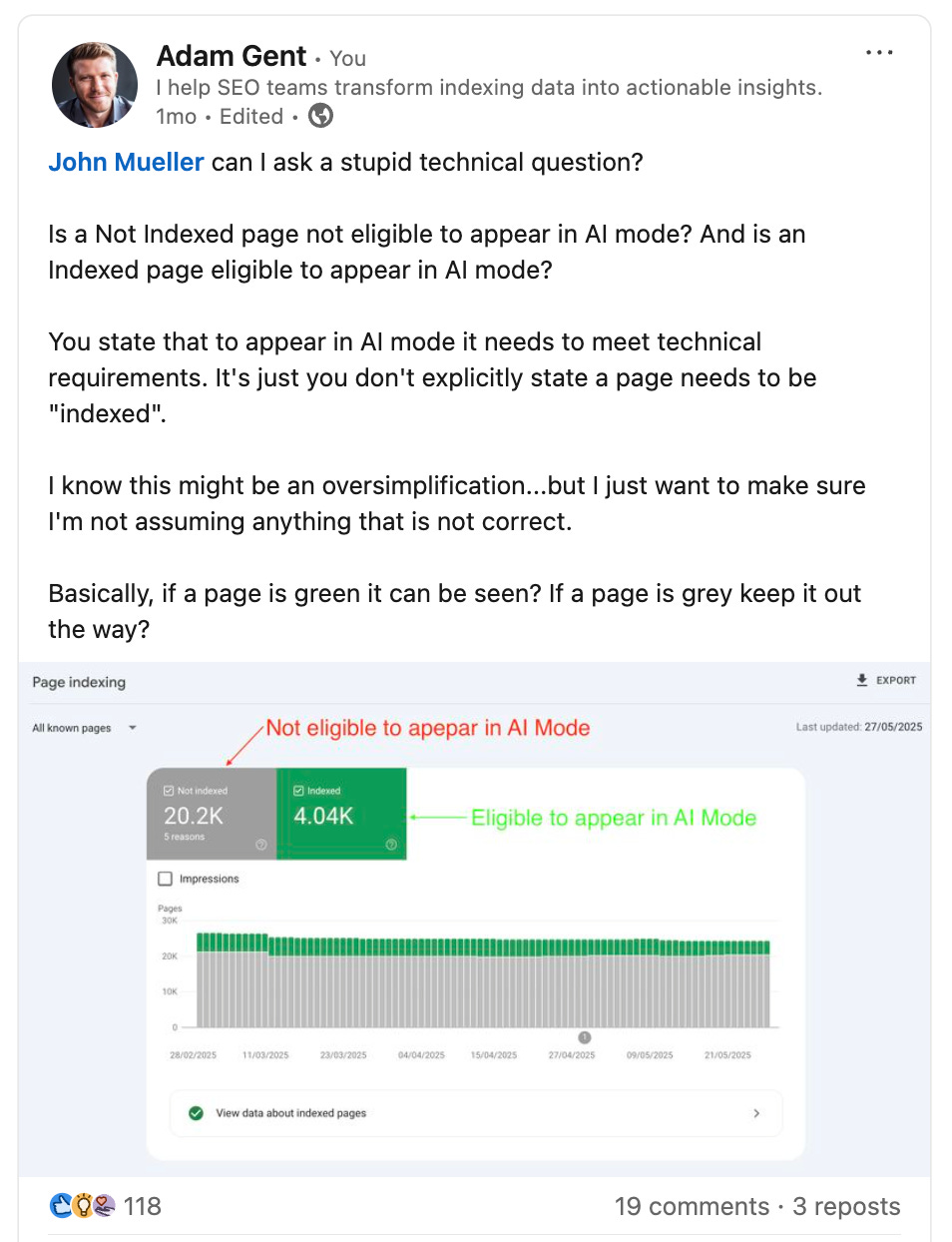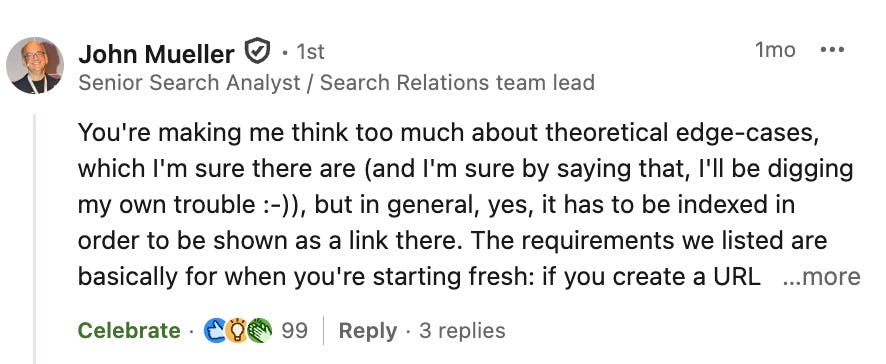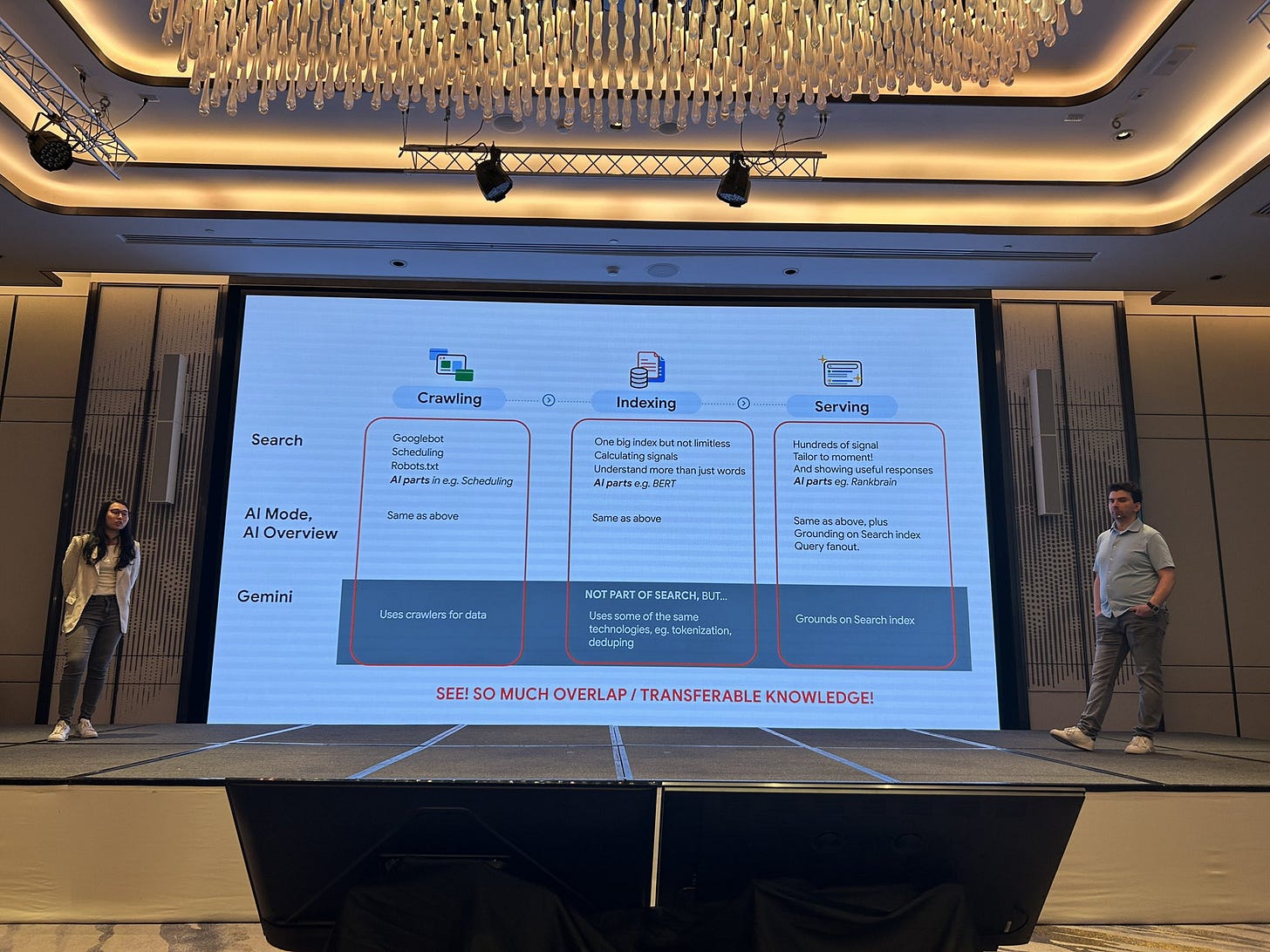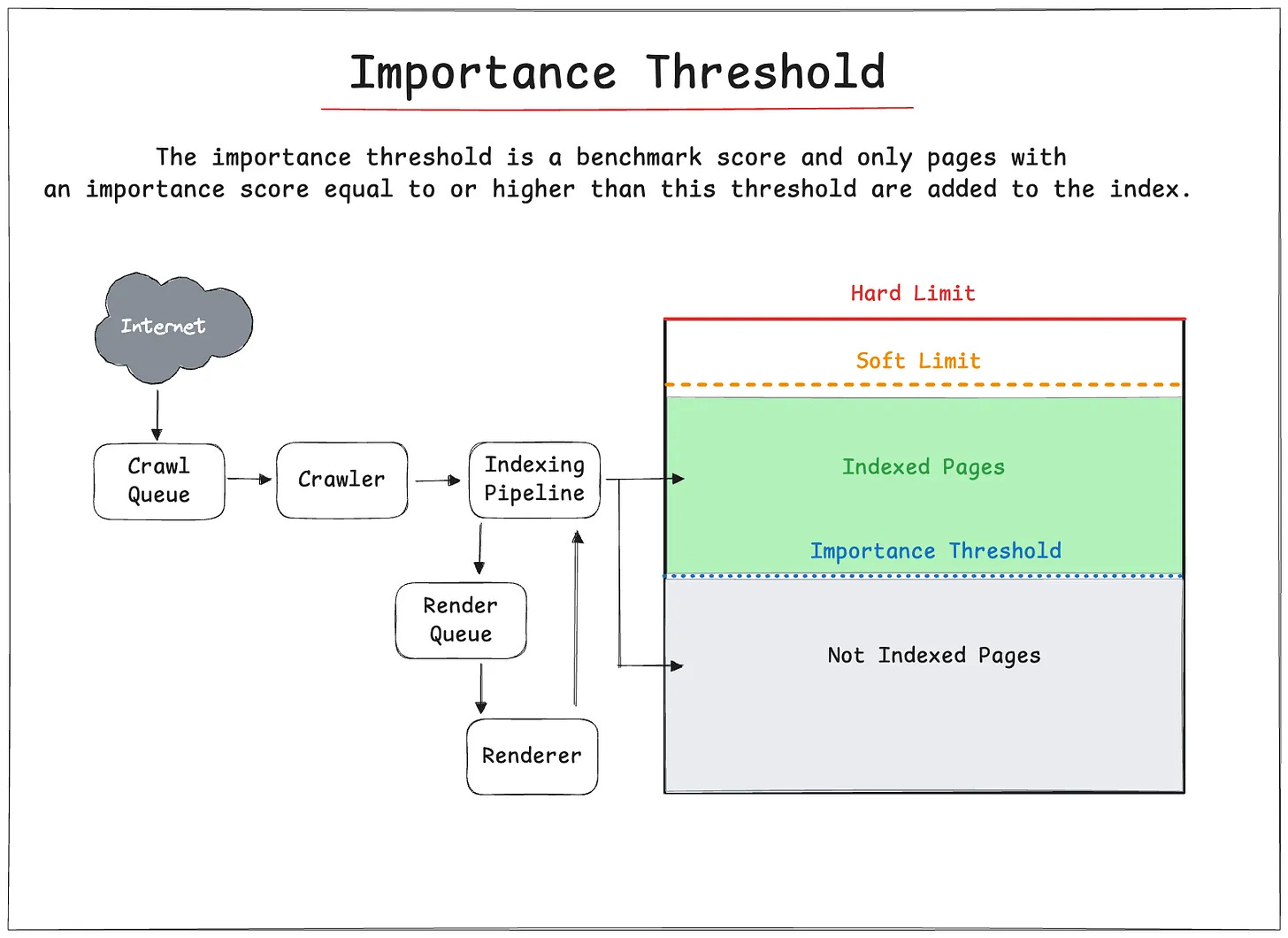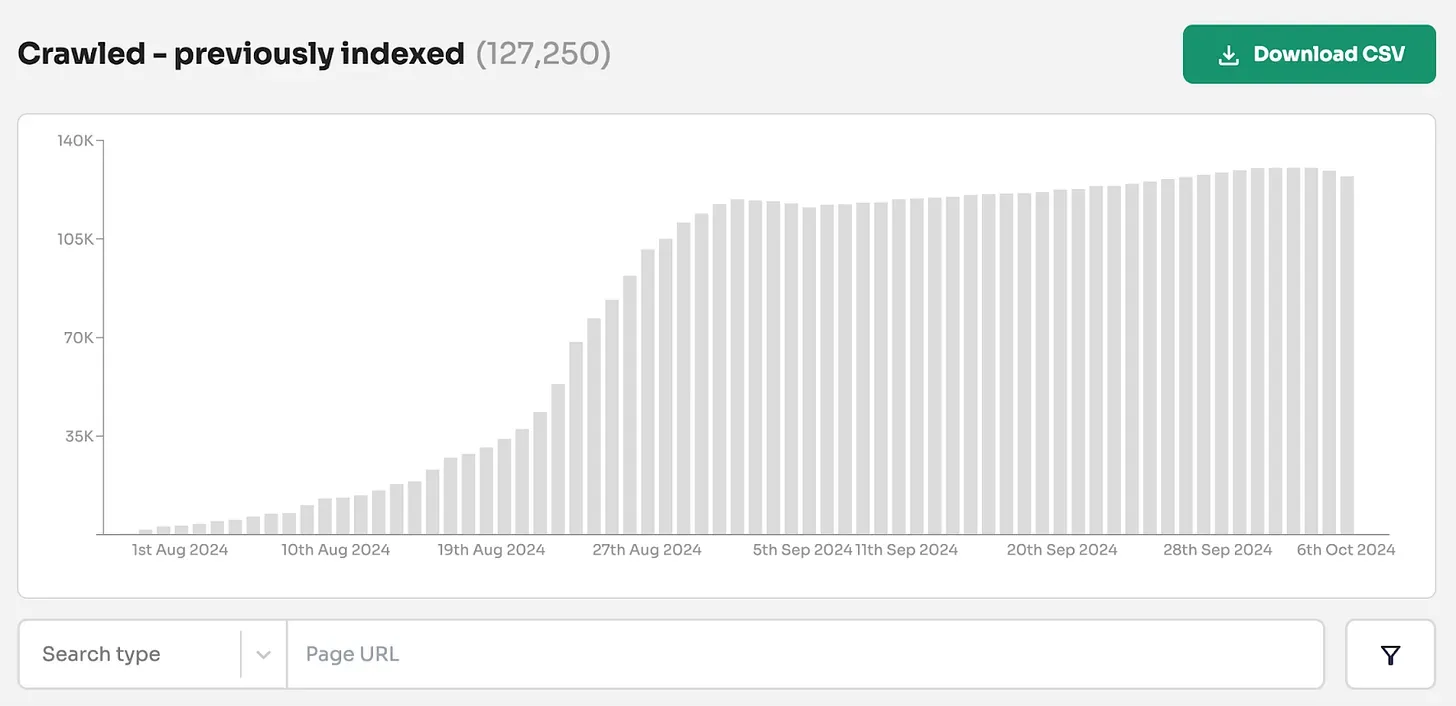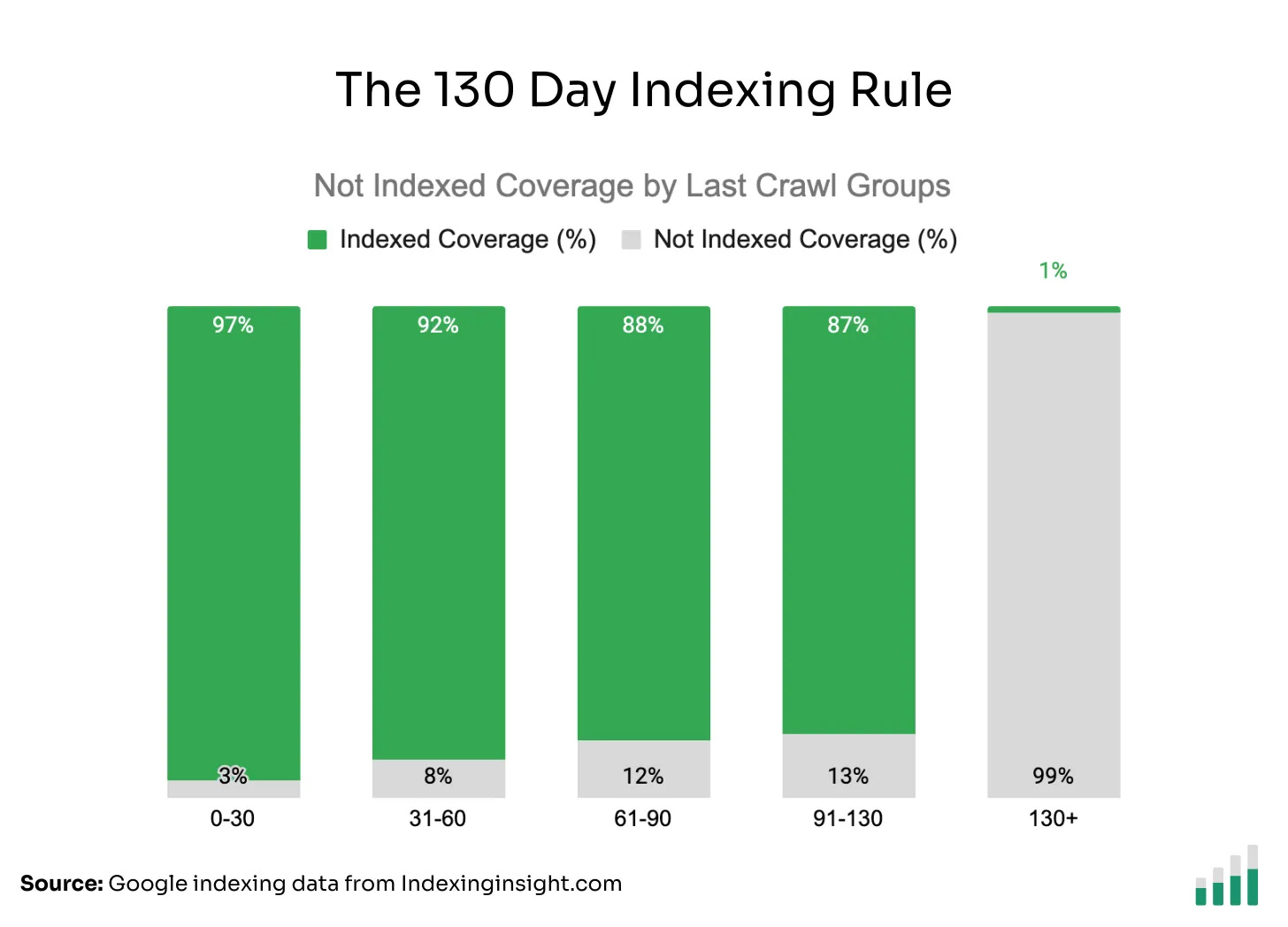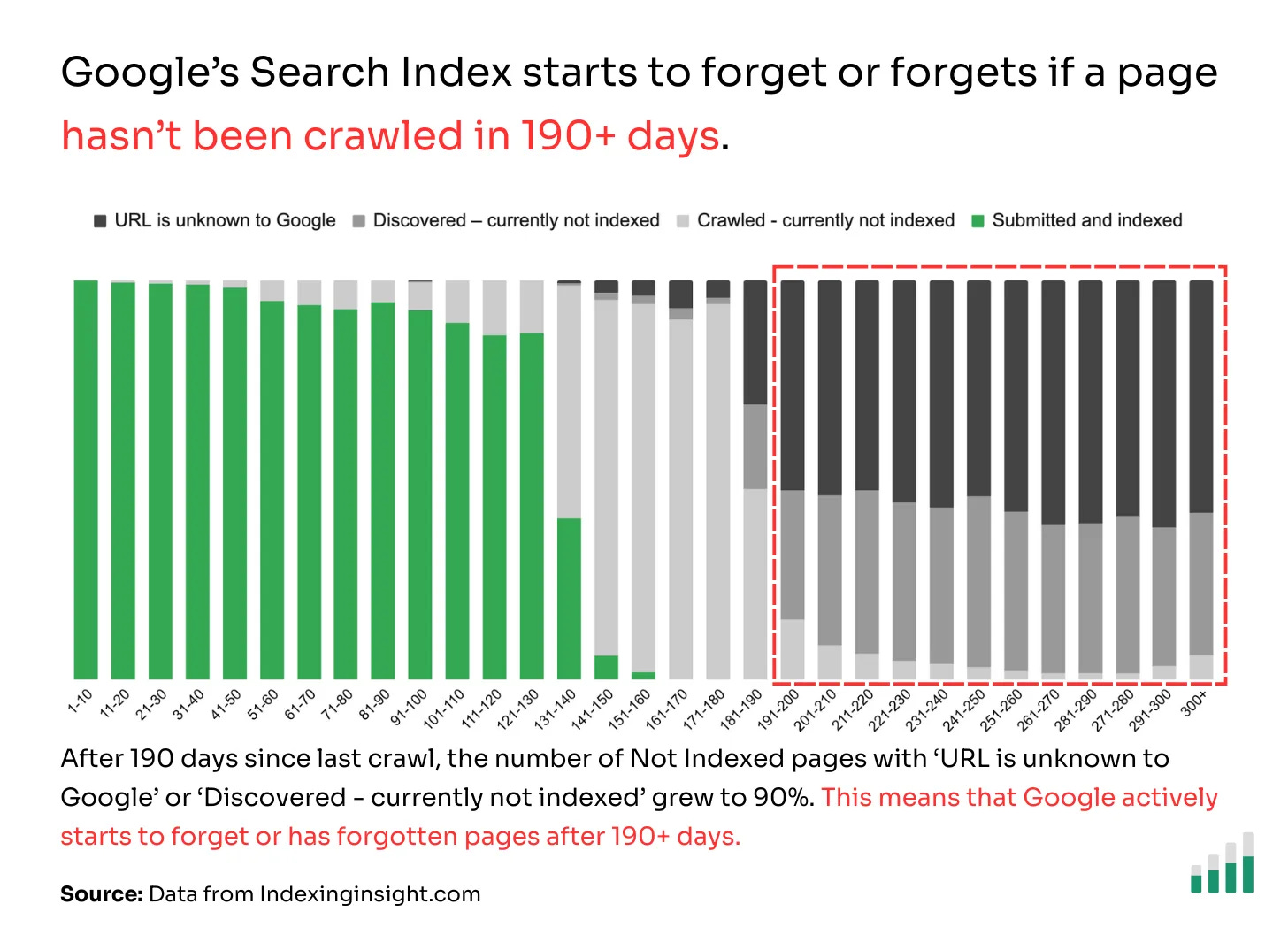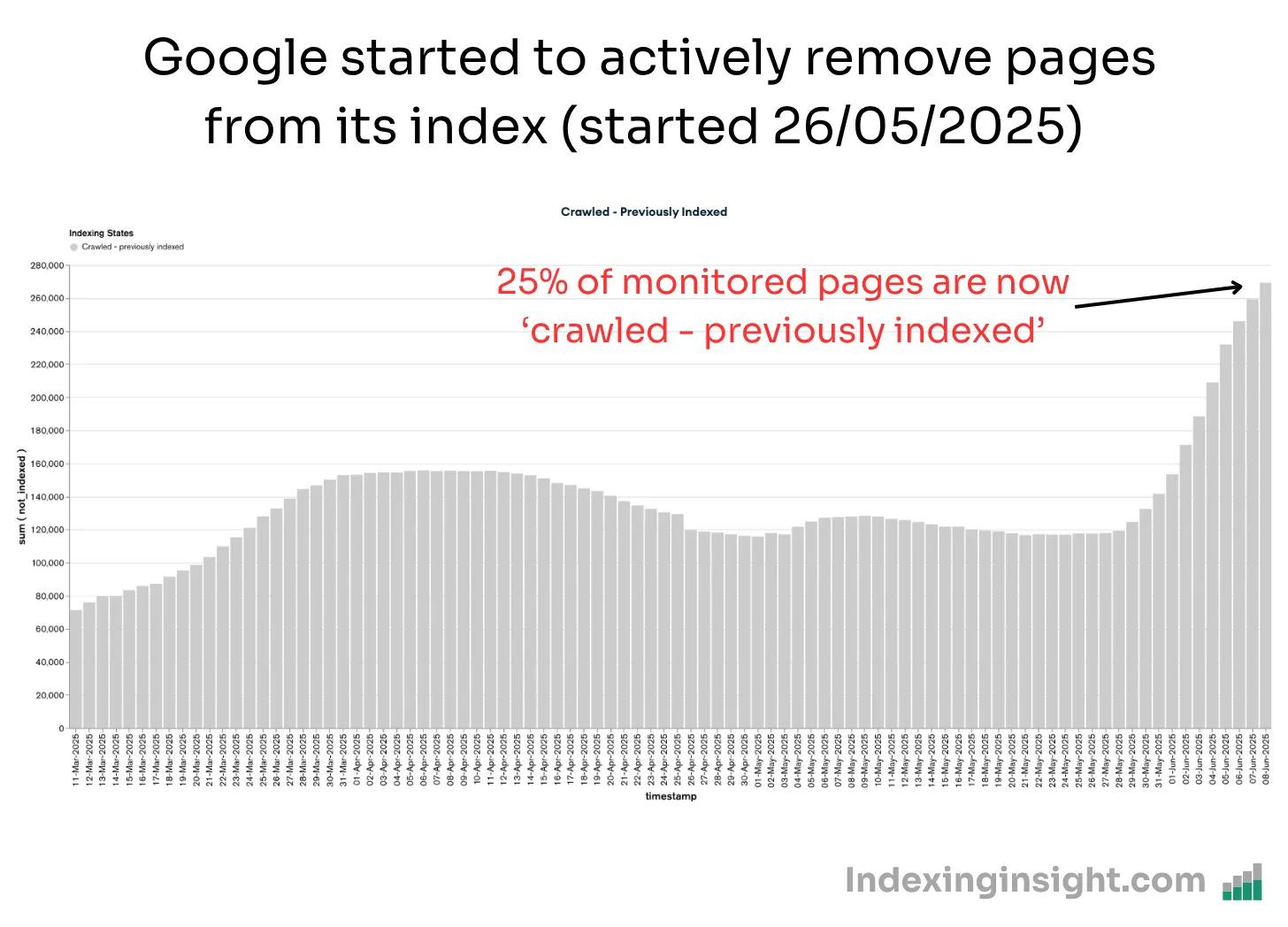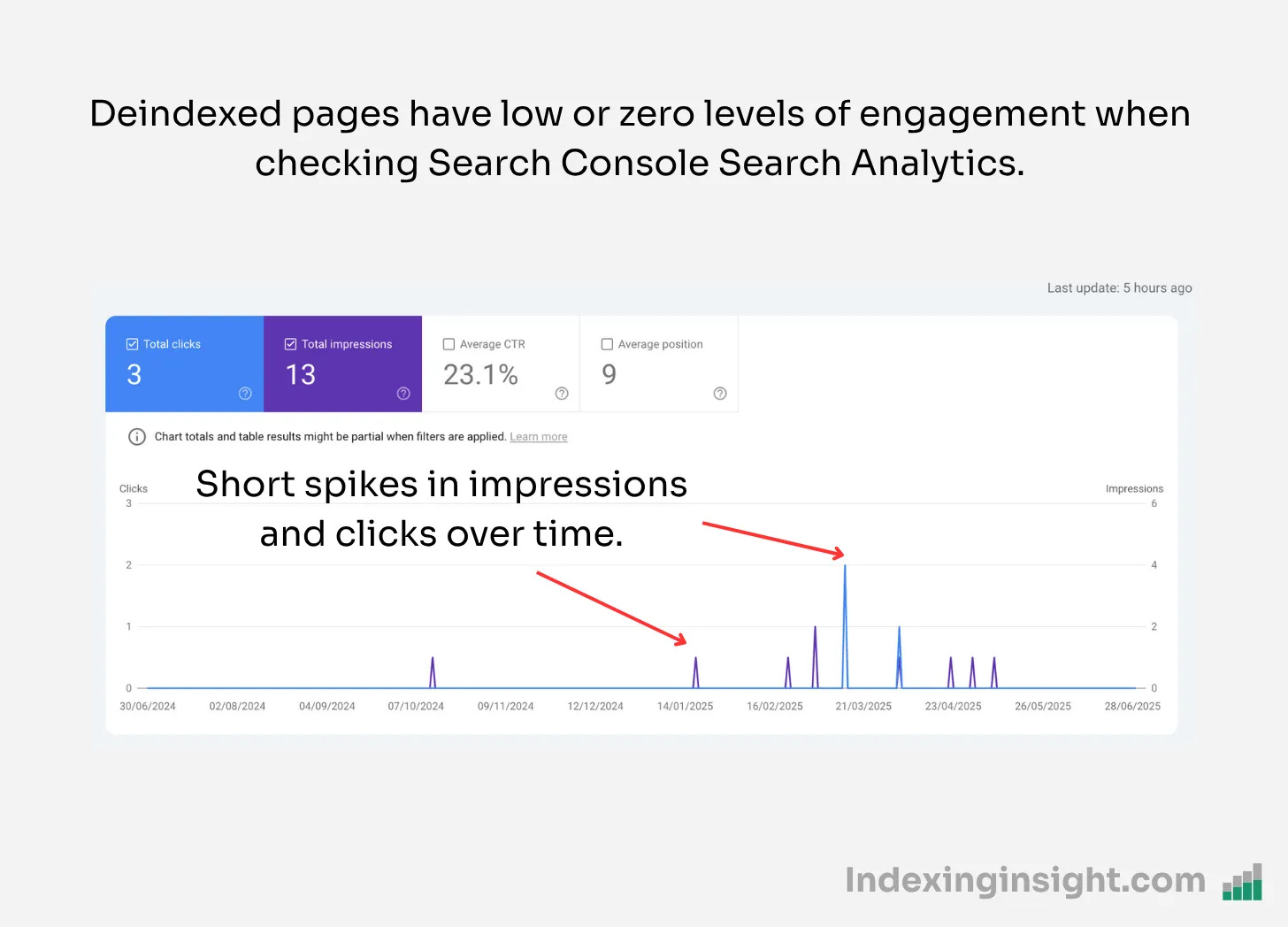Google’s Index is the Gatekeeper to AI
Google's AI Search features use the same index infrastructure that uses a sophisticated filtering system that actively removes content.
Subscribe to the newsletter to get more unique indexing insight straight to your inbox…
…or watch a demo of Indexing Insight to track, monitor and fix indexing issues at scale.
Google's AI search features aren't separate systems.
They are powered by the same indexing and crawling pipelines that power traditional search results. And just like traditional search results, Google’s index is the gatekeeper to AI Search results.
This means your content must pass Google's technical, duplicate and quality filters to appear in AI features like AI Overviews and AI Mode.
In this newsletter, I'll explain how Google's AI search infrastructure relies on traditional indexing and reveal the quality threshold that determines whether your content survives in Google's index.
So, let's dive in.
🤖 Google's AI Search Infrastructure Relies on Traditional Crawling and Indexing Processes
The future of search is AI, but amongst the hype there's a fact most people miss.
Google's AI search features like AI Overviews and AI Mode aren't built on separate systems. They're powered by the same index that has been filtering traditional search results for years.
Google's official documentation makes this crystal clear:
"To be eligible to be shown as a supporting link in AI Overviews or AI Mode, a page must be indexed and eligible to be shown in Google Search with a snippet."
To make sure there were no misinterpretations, I asked John Mueller on LinkedIn if the page indexing report could be used to identify pages eligible to appear in Google’s AI features.
John Mueller replied to the LinkedIn post and confirmed that pages marked as indexed in the Page Indexing report are eligible to appear in AI features.
Gary Illyes confirmed that AI Search uses the same processes at Search Central Deep Dive 2025.
In the slide, you can see that Google's index infrastructure powers traditional search results powers AI search features.
The crawling and indexing architecture that Google has built over 2 decades isn’t going to change, but how the content is served will change.
🚧 Search Index is the Gatekeeper to AI Search
Google’s crawling and indexing pipelines are the gatekeepers to AI Search.
Google employs a sophisticated three-tier filtering system that actively removes content at multiple stages:
Technical Requirements: A page URL must return a live 200 status code and cannot have a noindex tag.
Duplicate Detection: Google analyzes content to identify if it's similar or a duplicate of another page in its index.
Quality Threshold: Google actively removes low-engaged and low-authority content that doesn't meet its quality threshold.
The 3 stages of indexing explains why a technically perfect page isn't enough.
The reality is that Google’s Search index is designed to actively remove content that does not meet it’s quality threshold.
Our research has identified how the Google search index works and uses a process to remove low-quality content from its search results and index.
You might think that you can rely on Google Search Console reports to help you identify pages being actively removed. But our research has found that the data shown in Google Search Console > Page Indexing report is hiding critical insights.
Luckily, at Indexing Insight we’ve noticed these hidden insights and built unique reports to help identify content being removed from Google’s Search index.
For example, a study from Indexing Insight has shown that the 130-day indexing rule is true. Google will actively remove content from it’s search engine results if it has not been crawled in 130 days.
Which means it cannot appear in AI Search features or traditional search results.
Another study found another index rule: The 190-day indexing rule.
If a page has not been recrawled in 190-days Google’s search index forgets about your content. And it is given zero priority by Google’s web crawlers.
The reason why pages are actively removed? Let’s quickly dig into the data.
Why Are Pages Being Actively Removed?
Google released an indexing update (we called it the May-25 Indexing Purge).
The update was so big that it caused many SEO professionals in the industry to cry out on Twitter and LinkedIn.
At Indexing Insight, we noticed that 25% of the pages being actively monitored by our tool were actively removed from Google’s search results (indexed > not indexed).
When we analysed why pages were actively removed it was clear why. All the pages that were removed all had the same characteristics:
Zero engagement (clicks, impressions, query count)
Low engagment (clicks, impressions, query count)
Low internal link count
The May 2025 indexing purge has revealed one thing: Google is more than happy to remove pages that aren’t driving any value for their Search product.
🎯 What This Means for AI Search
Your appearance in AI Search features is decided by Google’s index.
The studies and unique data from Indexing Insight has shown that AI Search strategies need to take into account:
User Engagement and Satisfaction Matters: User engagement and satisfaction matter in a search index that is happy to actively remove pages that are not driving any value for its Search product.
Quality Over Quantity Becomes Critical: With Google actively purging low-engagement content, the traditional approach of publishing large volumes of content without a distribution plan and hope it sticks no longer works.
Crawl Frequency Indicates Content Value: Pages that aren't crawled regularly are at risk of being completely removed from Google's index. This makes technical SEO and internal linking architecture more important than ever.
Authority Increasingly Matters: The research shows that domain-level signals like brand authority and backlinks help important pages remain indexed.
AI Search Doesn't Change Technical SEO: The same technical best practices that work for traditional search apply to AI features. Both use the same crawling and indexing pipelines to power search engine results.
📌 Summary
Google's AI search features represent the future of information discovery, but they're built on the foundation of traditional search infrastructure.
Your content must first survive Google's increasingly sophisticated quality filters to have any chance of appearing in AI features.
The 130-day rule isn't just about crawling, it's about engagement. Pages that don't generate meaningful user interactions are actively removed from Google's index and eventually forgotten entirely.
In the AI search era, this quality threshold becomes even more critical as Google's AI systems need high-quality, authoritative content to generate reliable responses.
The path to success in AI search isn't through special optimisation techniques. It's through creating genuinely valuable content that earns consistent engagement and maintains Google's trust over time.
The index remains the gatekeeper, and understanding its filters is the key to thriving in the AI-powered future of search.


